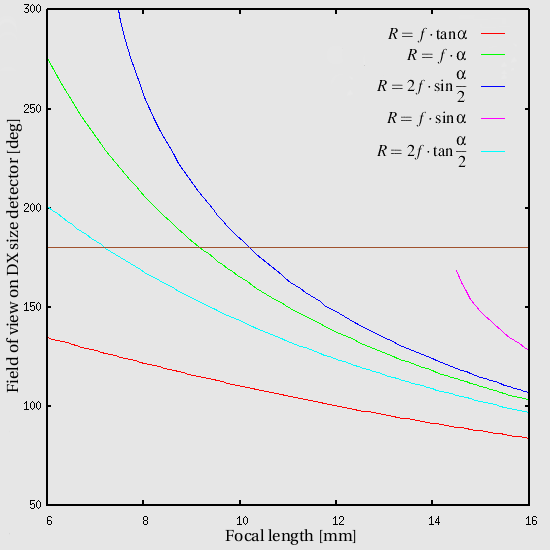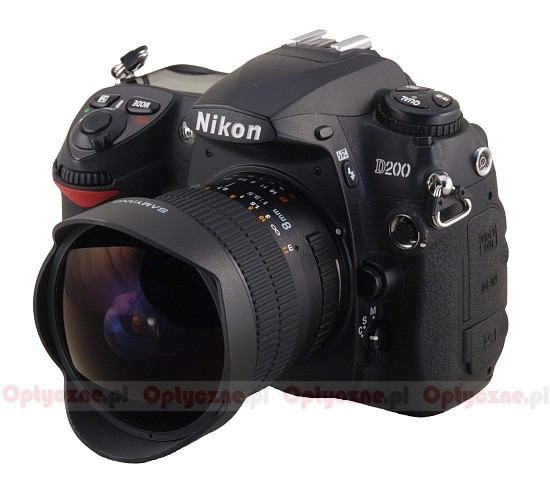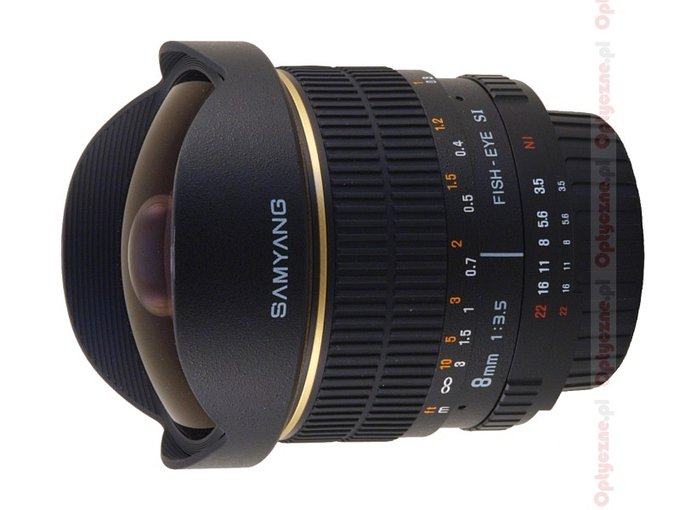Samyang 8 mm f/3.5 Aspherical IF MC Fish-eye
1. Introduction
The standard projection formula used in most lenses is called rectilinear projection and it aims at the correction of distortion. In case of this particular projection, straight lines are to remain straight, even for wide angles of vision. But there’s no such thing as a free lunch. A lens like this, having a focal length of 10 mm, has a field of view of only 110 degrees, which is far from a fisheye’s 180. The relation between a lens’ field of view and its focal length for rectilinear projection is represented by the red line in the picture below.
 |
Please Support UsIf you enjoy our reviews and articles, and you want us to continue our work please, support our website by donating through PayPal. The funds are going to be used for paying our editorial team, renting servers, and equipping our testing studio; only that way we will be able to continue providing you interesting content for free. |
- - - - - - - - - - - - - - - - - - - - - - - - - - - - - - - - - - - - - - - - - - - - - - - -
We can, however, acquire a wider field of view for a similar focal length, the price of which is distortion. In relation to the projection used, geometrical distortions may differ in character and the field of view – focal length relation can assume various forms. And so, in our picture, we have to do with the following projection formulae: drawn in green is the projection maintaining angular distances (called equidistant projection ), the projection shown in blue maintains surface relations, another one (called orthographic projection and marked pink) maintains planar illuminance, the last one (stereographic projection, shown in turquoise) maintains the angles. For better orientation, the value of 180 degrees is shown by the brown, horizontal line.
Clearly, Nikkor 10,5 mm perfectly fits the blue curve. Sigma 10 mm seems to be an example of equidistant projection. The combination of 8 mm and 180 degrees used in Samyang implies the use of stereographic projection. It is very interesting news. Using such projection in photography results in the most eye-pleasing effects as in the corners of the frame, shapes remain the least deformed and the bending of straight lines is moderate for a fisheye. The problem with stereographic lenses is the difficulty of their making, which usually triggers high prices. To our complete surprise, the stereographic fisheye is offered by no one else but the cheap Samyang!
The lens was lent by the e-shop Foto-Tip for the needs of this review. The company warns that we have to do with a pre-production lens. The manufacturer, however, plans to make no changes in the instrument’s final shape. After all, we have to do with a fully manual lens so there’s no electronics or firmware to update. The optical structure, on the other hand, is to remain unaltered.
You’re welcome to learn more about our test procedure described in the article "How do we test the lenses?"
 |







